Warehouses are a critical part of many businesses, but these spaces are notoriously costly to heat and cool. Achieving an ideal temperature is an essential part of keeping your company’s warehouse running smoothly in a dynamic economy, which is why you need to pay attention to this often overlooked aspect of any warehousing operation.
REFRESH YOUR WAREHOUSE WITH HVLS FANS AND BOOST PRODUCTIVITY
Excessively hot or cold conditions can hurt productivity in a number of ways. Extreme temperatures undermine employee productivity and, in some cases, could even lead to product loss or equipment damage. Setting up your facility with the right warehouse fans is a cost-effective and environmentally friendly way to help avoid all of these problems.
Installing High Volume Low Speed (HVLS) fans will help your company reduce energy costs while improving employee comfort to help increase productivity. These industrial fans help control warehouse conditions all year round through improved temperature regulation. By preserving heat in the winter and promoting the flow of cool air in the summer, HVLS fans help solve two problems at once.
To learn more about how we can help you increase productivity and reduce your energy costs, contact us anytime and we’ll be glad to help.
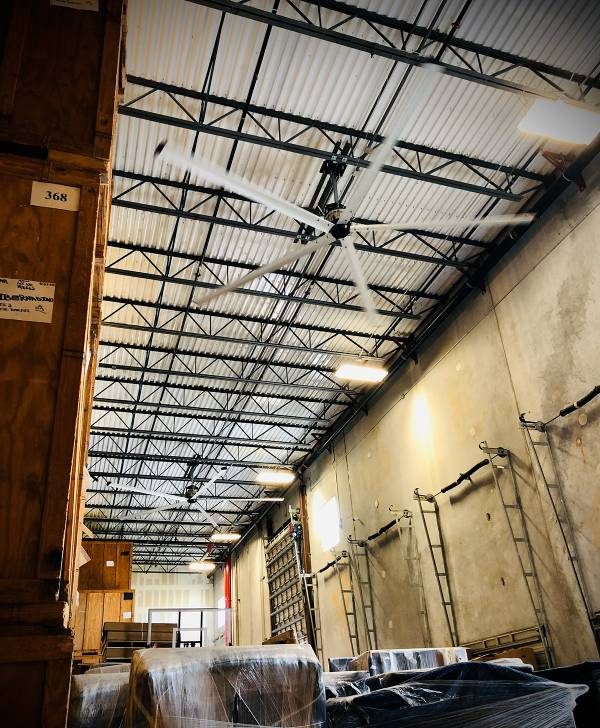
Explore Products
Reduce Energy Costs and Save
Energy costs can be cut significantly – sometimes by as much as 30% – by upgrading an existing heating, ventilation and air conditioning (HVAC) system with the addition of a high-volume, low-speed fan. Known in the industry as HVLS fans, warehouse owners and operators see substantial cost savings once the right HVLS ceiling fans are installed. Reduced energy costs do more than save money; they also help your company do its part for the environment by promoting sustainable solutions.
To find out what a difference the right warehouse fan can make to your company’s heating and cooling costs, fill out the Energy Audit form below and Refresh Fans will gladly provide you with a free energy consultation.
How are HVLS Fans Different from Other Fans?
High volume low speed fans are industrial fans with a diameter of more than seven feet. They rotate slowly to evenly, and consistently distribute air throughout indoor spaces.
They make the perfect warehouse fans because they promote the steady air movement that helps drive thermal destratification (see below) in large, indoor spaces. Conventional high speed fans do little to combat the natural process of thermal stratification, which is why they have a negligible impact in spaces like warehouses.
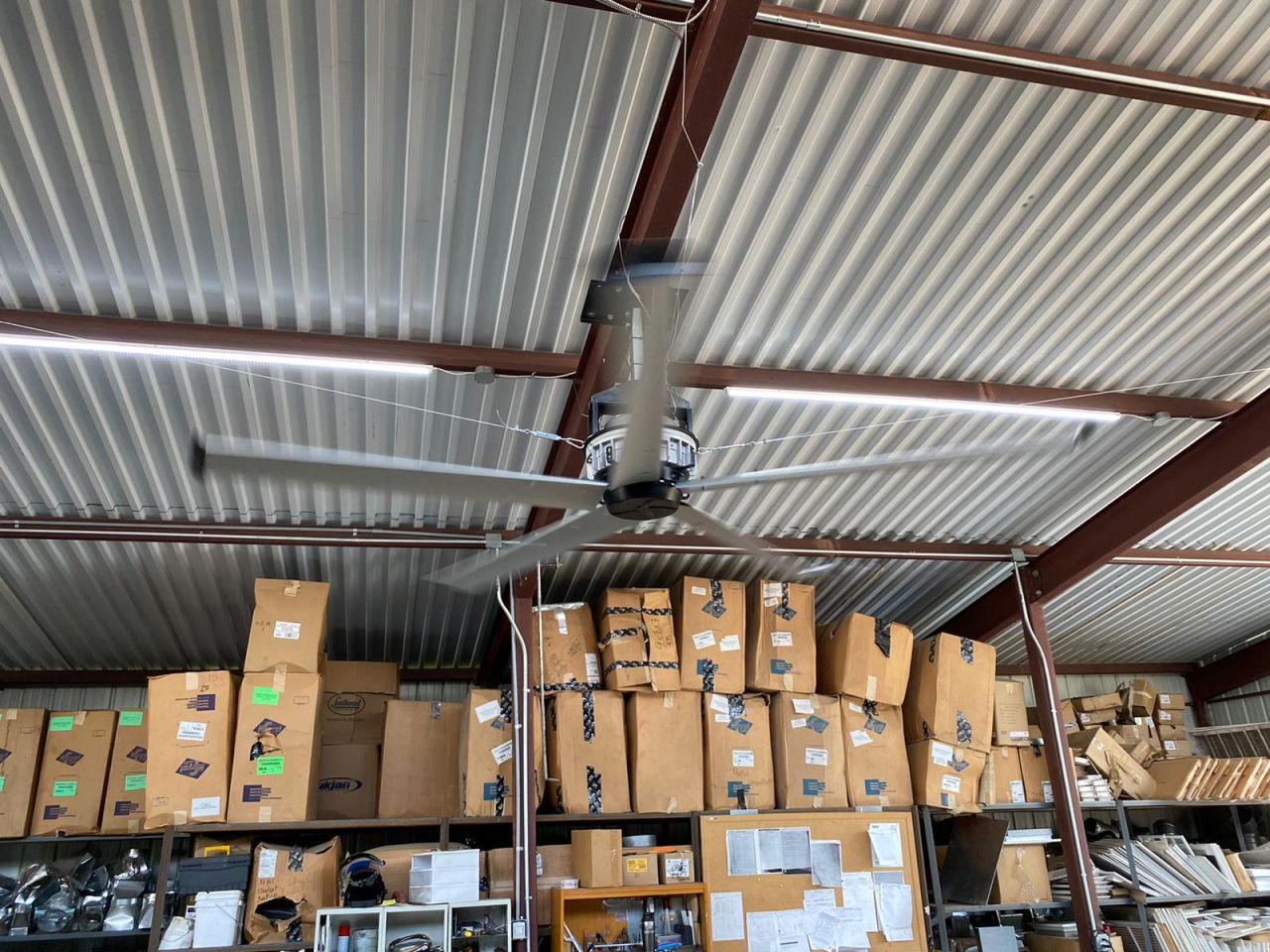
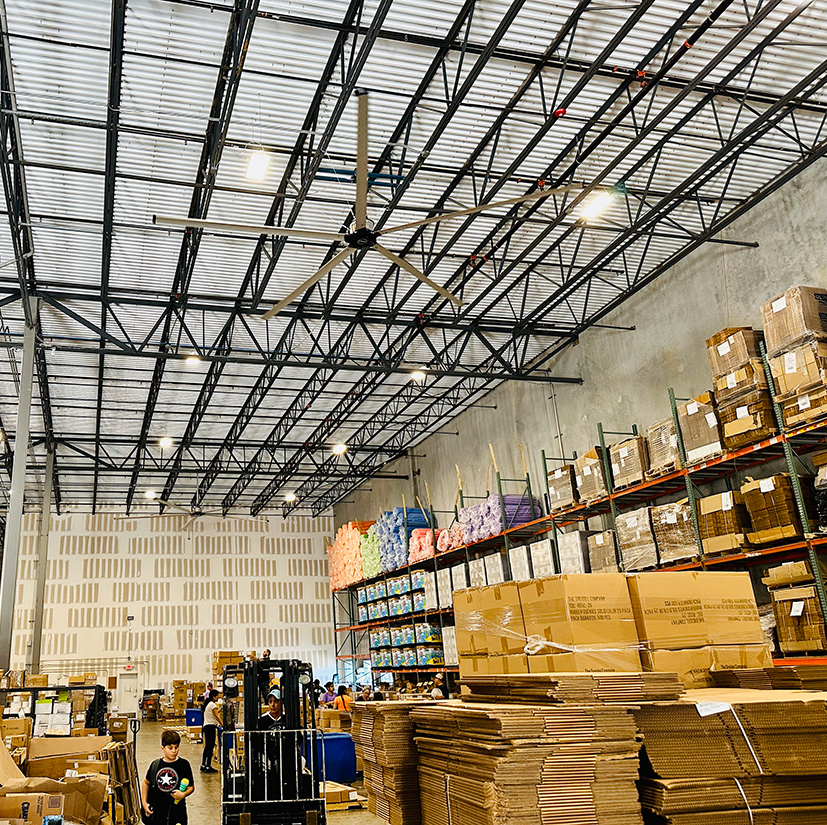
How Does Thermal Stratification Affect my Warehouse?
Thermal stratification refers to the natural process of how air temperatures form layers from floor to ceiling. It is caused by lighter, hot air rising to the ceiling and heavier, cool air falling to the floor.
Buildings with stratified air tend to overheat or overcool, which makes it nearly impossible to maintain a comfortable temperature by adjusting the thermostat. Thermal stratification also leads to major energy waste because most HVAC systems struggle in these conditions.
In buildings with high ceilings, like warehouses, HVLS ceiling fans fight against thermal stratification by pushing the warm air down from the ceiling to the floor, where it radiates outward until it hits a wall. The warm air then rises along the walls and begins to circulate to naturally regulate the temperature. In doing so, HVLS warehouse fans will greatly reduce the energy needs of your HVAC system.
How Will Warehouse Fans Help my Business?
Large indoor spaces, like a warehouse or industrial building, often put huge demands on their HVAC systems and those systems can rarely keep up when a company needs to operate, no matter what the weather is like. Overuse of HVAC systems also decreases their long-term lifespan, making costly maintenance visits more frequent.
Whether it is too hot or too cold, the impact is virtually the same. Employees are forced to struggle with difficult working conditions, which undermines morale and productivity, while equipment and power-hungry HVAC systems waste expensive energy.
If you own or operate a warehouse or industrial space, having HVLS ceiling fans installed will help to:
- Cut energy costs all year round by as much as 30%
- Boost the productivity of employees
- Regulate temperatures consistently
- Improve the lifespan of machinery
- Reduce your company’s carbon footprint
Having your warehouse outfitted with the right kind of industrial fan will help improve both your daily operations and your bottom line. The benefits for employees and the savings for owners make installing industrial fans in your warehouse a win-win situation!
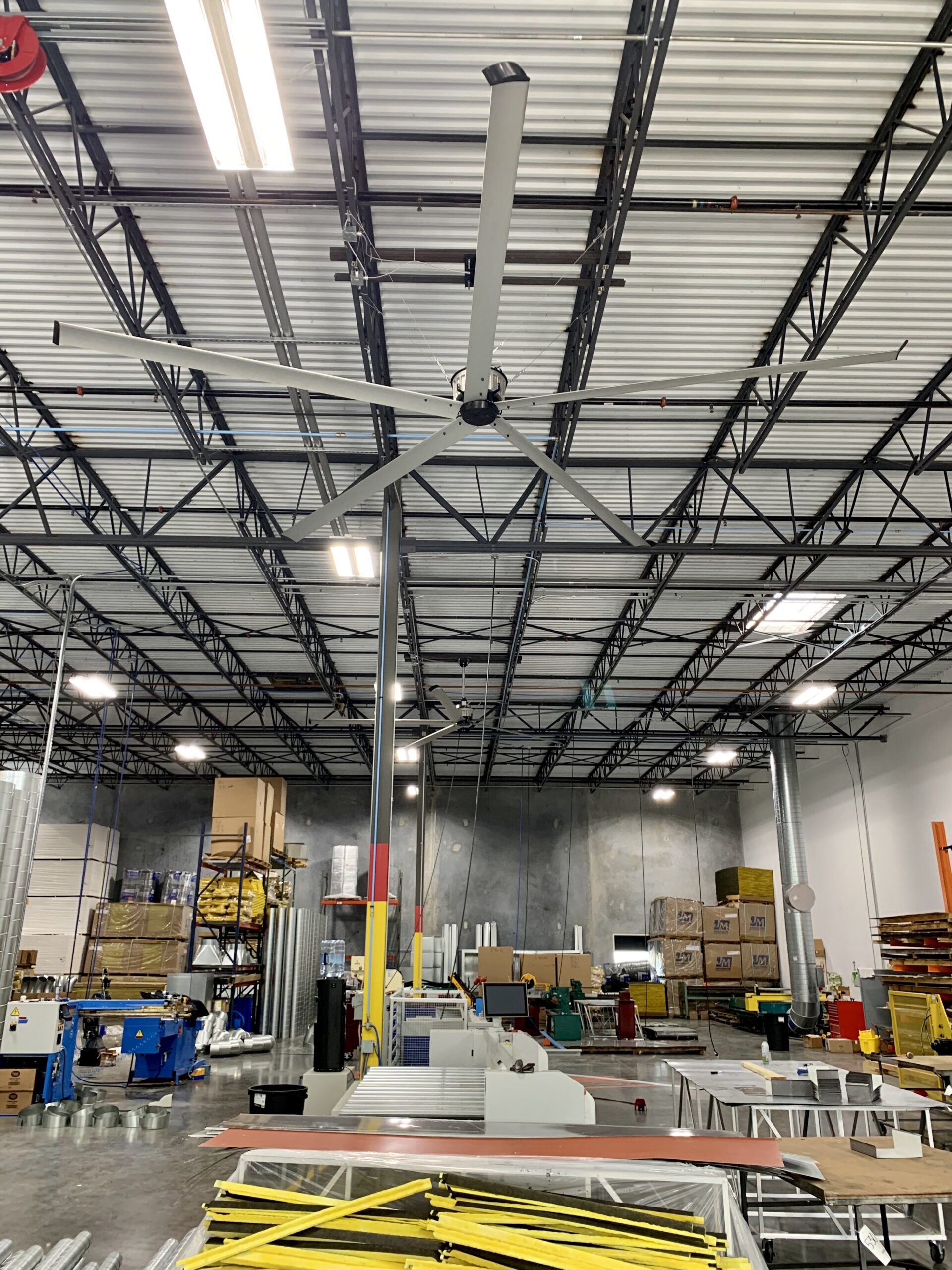
THE LATEST NEWS FROM Refresh FANS
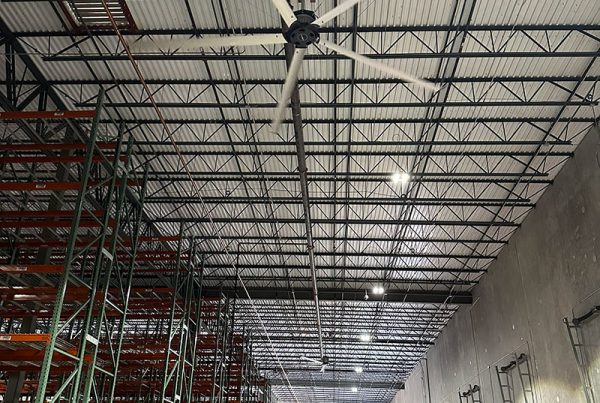 Energy Return on Investment (EROI): Measuring Long-Term Savings from HVLS Fans
Energy Return on Investment (EROI): Measuring Long-Term Savings from HVLS Fans
 Use-It-or-Lose-It CapEx Season: Why HVLS Fans Are the Smartest Investment You Can Make
Use-It-or-Lose-It CapEx Season: Why HVLS Fans Are the Smartest Investment You Can Make
Use-It-or-Lose-It CapEx Season: Why HVLS Fans Are the Smartest Investment You Can Make
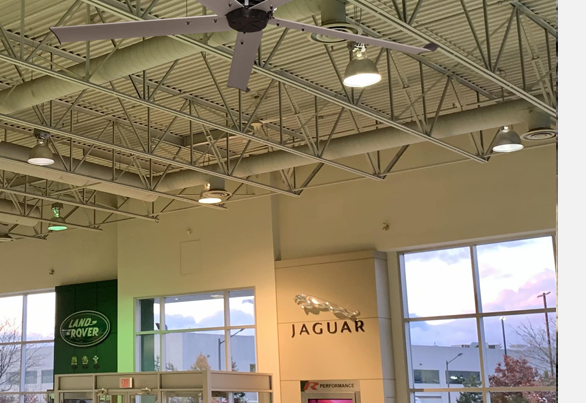 How HVLS Fans Reduce Operational Costs in Large Logistics Facilities
How HVLS Fans Reduce Operational Costs in Large Logistics Facilities
How HVLS Fans Reduce Operational Costs in Large Logistics Facilities
Frequently Asked Questions
Can You Buy Replacement Blades For Ceiling Fans
You Can, however you won’t need to. Our blades are manufactured using robust anodized aluminium and are built to last.
Which Direction Should A Ceiling Fan Turn In The Summer Or Winter?
When purchasing an HVLS fan for cooling or heat savings it is important to understand the science of airflow. We always recommend running our fans in the forward direction. In the summer your fan will run fast to create a constant breeze and reduce the perceived temperature by an average of 10 degrees F. In the winter you will run the fan slowly to carefully push the warm air from the ceiling down towards the occupants without creating a perceptible breeze.
Which fan is commonly used in a warehouse?
Generally, a centrifugal or axial fan is used in a warehouse. A centrifugal fan blows air out by using deflection and centrifugal force. Both types of fans are heavy-duty. Our HVLS Fans rely on Axia fan technology.
What is the largest fan that you offer for a warehouse?
We offer a 24’ diameter HVLS fan for warehouse usage. Thermal stratification is a natural process of how air temperatures form layers from floor to ceiling.
How long can a warehouse fan run?
Our HVLS fans are built to run 24 hours a day/7 days a week.
What are the different types of Industrial Ceiling Fans?
Industrial ceiling fans are classified based on size, blade span, and motor power. Types include HVLS fans, High-volume, low-speed fans, Small industrial fans, Medium industrial fans, and Large industrial fans. They also come in various blade configurations and materials to suit different environments and cooling requirements.
What size ceiling fan for a warehouse?
For a warehouse, it’s recommended to have one HVLS fan for every 7,500-10,000 sq ft. The height of the ceiling should determine the fan size, the amount of air to be moved, and the coverage needed. A professional like us can help determine the right size fan to meet your needs.
Does a large ceiling fan work better?
A larger ceiling fan can provide better coverage and air circulation in a large space, but it depends on the space’s specific needs. A large fan is only sometimes necessary and can be less energy efficient than a smaller, properly sized fan. Therefore, it’s important to choose the right size fan for your space and consider factors such as ceiling height, coverage, and air movement requirements.
What size fan moves the most air?
The size of a fan that moves the most air depends on various factors, such as blade span, motor power, and rotational speed. A larger fan with a longer blade span and stronger motor can move more air, but it may not be necessary or efficient for smaller spaces. Choosing the right size fan is important based on your space’s specific needs and dimensions.